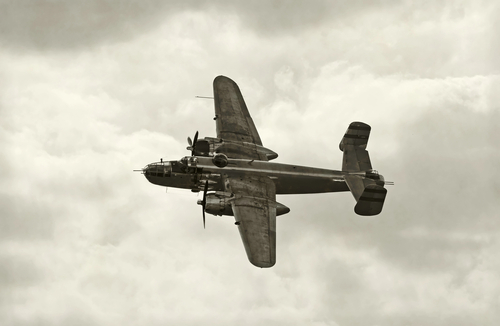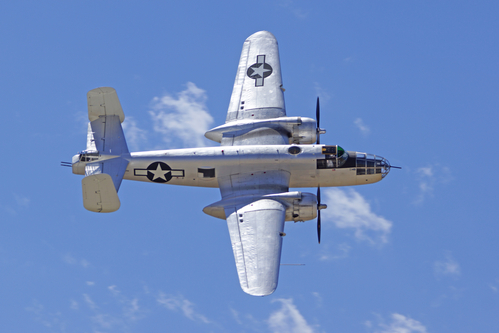
The B-25 Mitchell bomber, a wartime icon, is hailed for its role in pivotal moments such as the legendary Doolittle Raid, and its distinguished service across the globe during World War II.

A testament to its versatility, the B-25 fulfilled multiple roles – from a standard bomber to a gunship – and was cherished by its crews for its ruggedness and reliability.

Named after Brig. Gen. William “Billy” Mitchell, a staunch advocate of air power, the B-25 boasted a presence in almost every theater of the war, taking part in operations ranging from the Mediterranean to the Pacific, and from Burma to Normandy.

Powered initially by two Pratt & Whitney engines, the B-25 was born out of a 1939 Army Air Corps proposal that saw the first prototype fly in January of that year. Despite a crash, the design impressed the Air Corps, and after modifications, it went into mass production.

With an armament that evolved over time, some B-25s were fitted with cannons, glide torpedoes, and even a 75mm field gun, showcasing the aircraft’s adaptability.

This multi-role capability was exemplified in the Doolittle Raid on April 18, 1942, where B-25s launched from an aircraft carrier for the first time to bomb Tokyo, boosting American morale and compelling Japan to shift its strategic focus – a prelude to the pivotal Battle of Midway.

The B-25’s reputation grew as it supported ground troops, attacked enemy shipping, and engaged in anti-submarine missions.

Its prowess as a medium-level bomber was advantageous in the jungles of the Pacific Theater, where its low-level bombing and strafing runs proved particularly effective.

This adaptability also lent itself well to roles beyond combat, including reconnaissance, VIP transport, and as trainers post-war.

Beyond its battle honors, the B-25 also had a cultural impact. The bomber was the subject of Joseph Heller’s satirical novel, “Catch-22,” and the film “Thirty Seconds Over Tokyo,” which honored Doolittle’s raiders and showcased the aircraft’s vital role in the war.

Despite the punishing environments of warfare, the B-25 was lauded by its crews.

“It is amazing how much punishment the B-25s could take,” recounted Lieutenant David Hayward of the 341st Bomb Group.

The bomber was not only a machine of war but also a symbol of American resilience and innovation during one of history’s most challenging periods.

The B-25’s legacy continued after the war, serving with various air forces worldwide, illustrating the enduring nature of its design.

Its historical significance is commemorated through the numerous Mitchells that remain airworthy, gracing the skies at air shows, and serving as flying tributes to the brave men and women of World War II.
